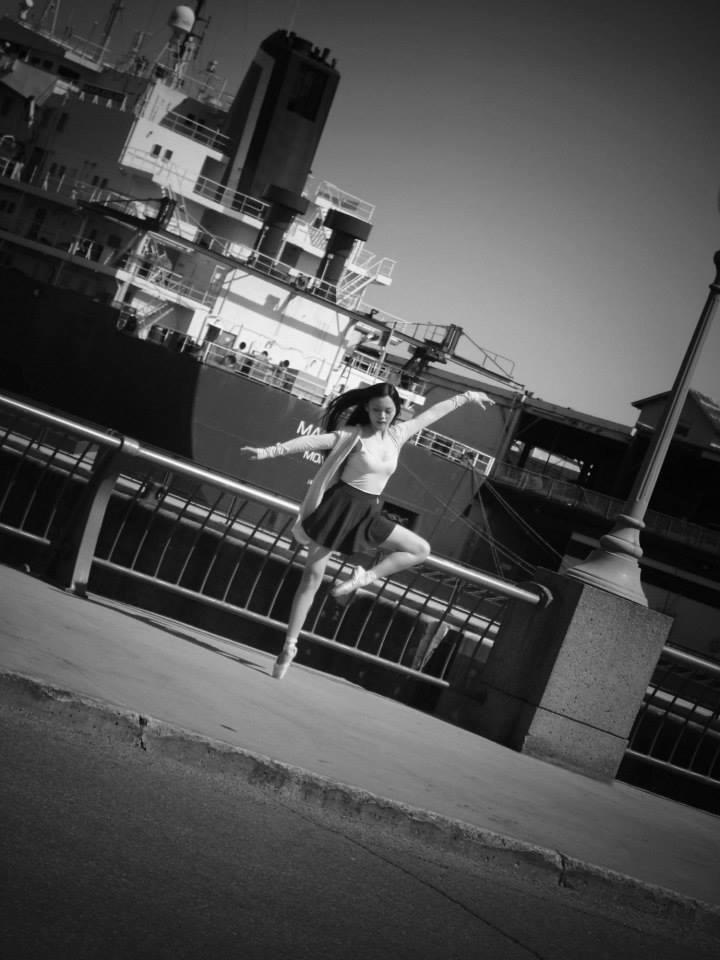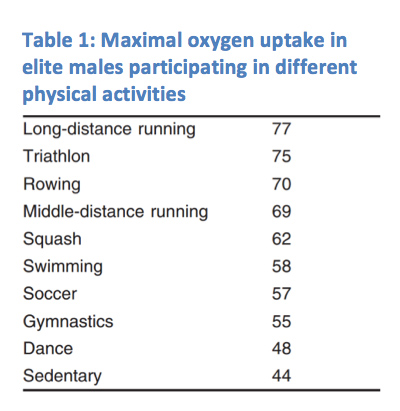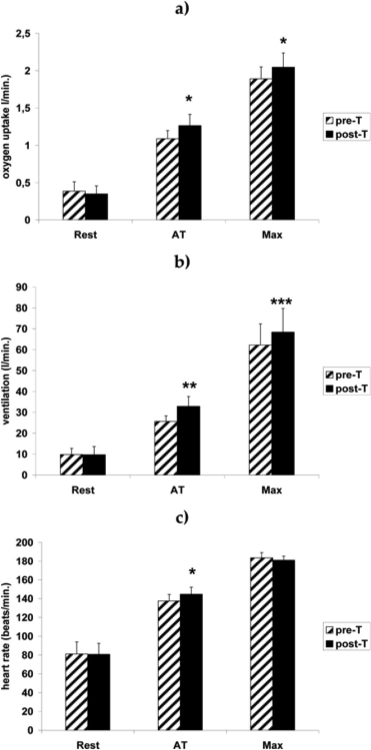Fitness On Your Toes
“Whereas a painter can leave his brush and canvas in a room, a dancer can never disengage from the vessel through which he or she creates art.” *
 The art form of dance is so different from many other forms because it lies beyond the simple expression of emotion or beauty. It is also an active process no less physically demanding than many sports. A professional dancer, as a “performing athlete” [1], must be acquainted with the mechanics of his or her body while executing this activity. In other words, dancers should possess a profound awareness of the limitations of their bodies in order to prevent injuries. The challenge is in stressing these limits in order to maintain and hopefully enhance their physical abilities, while striving to elongate their careers. It goes without saying that dancers are expected to be extremely physically fit and strong as they meet the requirements of this art form. From the same perspective, it is commonly believed that dancing is a fitness activity that improves physical health and wellness. The idea of dancers displaying excellent levels of fitness is even more ubiquitous. If we think about it, the hypothesis makes perfect sense considering the activity is extremely physically demanding.
The art form of dance is so different from many other forms because it lies beyond the simple expression of emotion or beauty. It is also an active process no less physically demanding than many sports. A professional dancer, as a “performing athlete” [1], must be acquainted with the mechanics of his or her body while executing this activity. In other words, dancers should possess a profound awareness of the limitations of their bodies in order to prevent injuries. The challenge is in stressing these limits in order to maintain and hopefully enhance their physical abilities, while striving to elongate their careers. It goes without saying that dancers are expected to be extremely physically fit and strong as they meet the requirements of this art form. From the same perspective, it is commonly believed that dancing is a fitness activity that improves physical health and wellness. The idea of dancers displaying excellent levels of fitness is even more ubiquitous. If we think about it, the hypothesis makes perfect sense considering the activity is extremely physically demanding.
However, before making such a statement, it is better to first take a closer look at the definition of fitness. Physical fitness may be defined as the individual’s ability to meet the demands of a specific physical task. Components of fitness are cardio-respiratory endurance, muscular endurance, muscular strength and body composition.
 Most surprisingly, ballet dancers demonstrate similar VO2 maximum values (A) to sedentary individuals [see Table 1]. From these results, it can be deduced that dancing alone cannot stimulate “positive cardiorespiratory adaptations” [1]. Although such a statement remains puzzling, many hypotheses justify these results. First, ballet class work at the barre (B) is only categorized as a low to moderate exercise intensity for an aerobic workout (around 50% of VO2 max is reached). Most exercises such as pliés, fondus, adages, etc., are low to moderate intensity aerobic exercises. Only a few exercises such as temps levés, grands battements and of course, stage performance, are categorized as high intensity. Furthermore, these exercises are very short (no more than 5 min) with a few minute intervals in between. Given that aerobic activities must last at least 20 minutes in order to enhance cardiorespiratory fitness, dancing seems not to be the best activity to improve fitness levels. Other studies have suggested no significant difference in cardiac structure or function was observed between dance students (experimental group) and corresponding untrained individuals (control group) [2]. The implication is that there is no correlation between dance activities and having a superior cardiovascular system.
Most surprisingly, ballet dancers demonstrate similar VO2 maximum values (A) to sedentary individuals [see Table 1]. From these results, it can be deduced that dancing alone cannot stimulate “positive cardiorespiratory adaptations” [1]. Although such a statement remains puzzling, many hypotheses justify these results. First, ballet class work at the barre (B) is only categorized as a low to moderate exercise intensity for an aerobic workout (around 50% of VO2 max is reached). Most exercises such as pliés, fondus, adages, etc., are low to moderate intensity aerobic exercises. Only a few exercises such as temps levés, grands battements and of course, stage performance, are categorized as high intensity. Furthermore, these exercises are very short (no more than 5 min) with a few minute intervals in between. Given that aerobic activities must last at least 20 minutes in order to enhance cardiorespiratory fitness, dancing seems not to be the best activity to improve fitness levels. Other studies have suggested no significant difference in cardiac structure or function was observed between dance students (experimental group) and corresponding untrained individuals (control group) [2]. The implication is that there is no correlation between dance activities and having a superior cardiovascular system.
Now, although dancing is not efficient in terms of improving cardiovascular fitness, it is very energy expensive. This is because a normal routine involves both the aerobic and the anaerobic (C) metabolism. For instance, tours piquéssur pointes requires the anaerobic system to deliver a substantial amount of energy in order to stimulate ATP resynthesis (D) in the working muscles and 30 tours piqués can reach up to 160% of the dancer’s VO2 max. Technically speaking, overwork of the aerobic system in a short amount of time will force the body to switch under the anaerobic energy system threshold. This phenomenon causes the release of lactic acid, the substance responsible for muscle pain and soreness when accumulated in muscle cells. On top of that, dancers are expected to be able to convey explosive energy as well as graceful delicacy. Although studies on this aspect of dancing are rather scarce, the activity necessitates extreme efficiency of these two main components of the anaerobic system. The first one is when a “large surge of power” [1] is required within a few seconds as in grands jetés. Movements of this sort are mainly powered by phosphocreatine (E). The second also yields high power but this time, the power level must be maintained for roughly 30-60 seconds. In summary, classical dance does not provide constant stimulus for the same fitness component; some exercises can be very low intensity aerobic activities while others may overwork a specific fitness component.
 All fitness components are interrelated. From this point of view, if the dancer’s heart is not efficient enough to keep up with the amount of energy production needed in the muscles; it is understood that significant changes in other fitness components such as muscular strength and endurance will not be observed. Flexibility on the other hand, is greatly developed in dancers since full range of motion is executed at all time. Joint mobility and muscle stretching exercises are well incorporated in every ballet exercises because flexibility is a must in preventing injuries and achieving high extensions.
All fitness components are interrelated. From this point of view, if the dancer’s heart is not efficient enough to keep up with the amount of energy production needed in the muscles; it is understood that significant changes in other fitness components such as muscular strength and endurance will not be observed. Flexibility on the other hand, is greatly developed in dancers since full range of motion is executed at all time. Joint mobility and muscle stretching exercises are well incorporated in every ballet exercises because flexibility is a must in preventing injuries and achieving high extensions.
The general conclusion that can be drawn is that only one component of fitness is improved through classical dancing and it is up to the dancers to execute other complementary fitness exercises by themselves to increase their cardiovascular endurance (i.e. aerobic capacity). Supplementing dance classes with aerobic fitness training can be beneficial for the dancer’s overall skill development since it will significantly reduce the accumulation of lactic acid in working muscles so that muscular fatigue and pain will be repressed. As shown in the figure, a study conducted by J. Kinet published in 2012 [3] demonstrates that supplementing a normal training session with other aerobic exercises improves significantly the cardiorespiratory performance of the professional ballet dancer.
Figure 1: Shows oxygen uptake (a), minute ventilation (b) and minute heart rate (c) in female ballet dancers at rest (Rest), at anaerobic threshold intensity (AT) and at maximal intensity (Max) prior to (pre-T) and after (post-T) 6 weeks of aerobic training. All results are expressed as the mean ± Standard Deviation (n=6). For more details on the analysis, see [3].
Nowadays, more and more studies concerning dancers’ health and physiological awareness are being published and fields such as Sports Medicine and Dance Medicine teach young dancers how to dance consciously and smartly in order to prevent injuries and to lengthen careers. Since evidence suggests that dance itself does not ensure good fitness levels, a dancer must stay on her or his toes with complementary exercise to meet the physical demands.
Footnotes:
(A) VO2 max: measurement indicating the “ability for muscular work under aerobic conditions” [1]. In other words, it quantifies the maximal oxygen uptake, transport and delivery efficiency of the cardio-respiratory system (lungs, heart, blood vessels) to the big working muscles.
(B) Exercises “à la barre“: A series of exercises at the bar aiming the improvement of classical technique. E.g. pliés, tendus, jetés, etc.
(C) Anaerobic fitness: The term anaerobic means “without oxygen”. Anaerobic fitness is the ability to use a large amount of energy in a limited period of time.
(D) ATP resynthesis: Adenosine triphosphate (ATP) is the molecule responsible for most cellular work. The aerobic system delivers the most energy
(E) Phosphocreatine: Phosphorylated creatine compound that provides energy for voluntary muscle contraction.
References
*GwinyaiBere. Perspectives on Dance Physiology and Body Awareness. www.academia.edu .
[1] Jamurtas, Y. K. (2004). The Dancer as a Performing Athlete. Sports Med .
[2] Whyte GP, Geroge L, Redding E, et al. Electrocardiography and echocradiography findings in contemporary dancers. J Dnace Med Sci 2004; 7 (3): 91-5
[3] J Hum Kinet. (2012). Supplementary Low-Intensity Aerobic Training Improves Aerobic Capacity and Does Not Affect Psychomotor Performance in Professional Female Ballet Dancer. US National Library of Medicine, National Institutes of Health.

Comments
No comments posted yet.
You have to be registered and logged in in order to post comments!